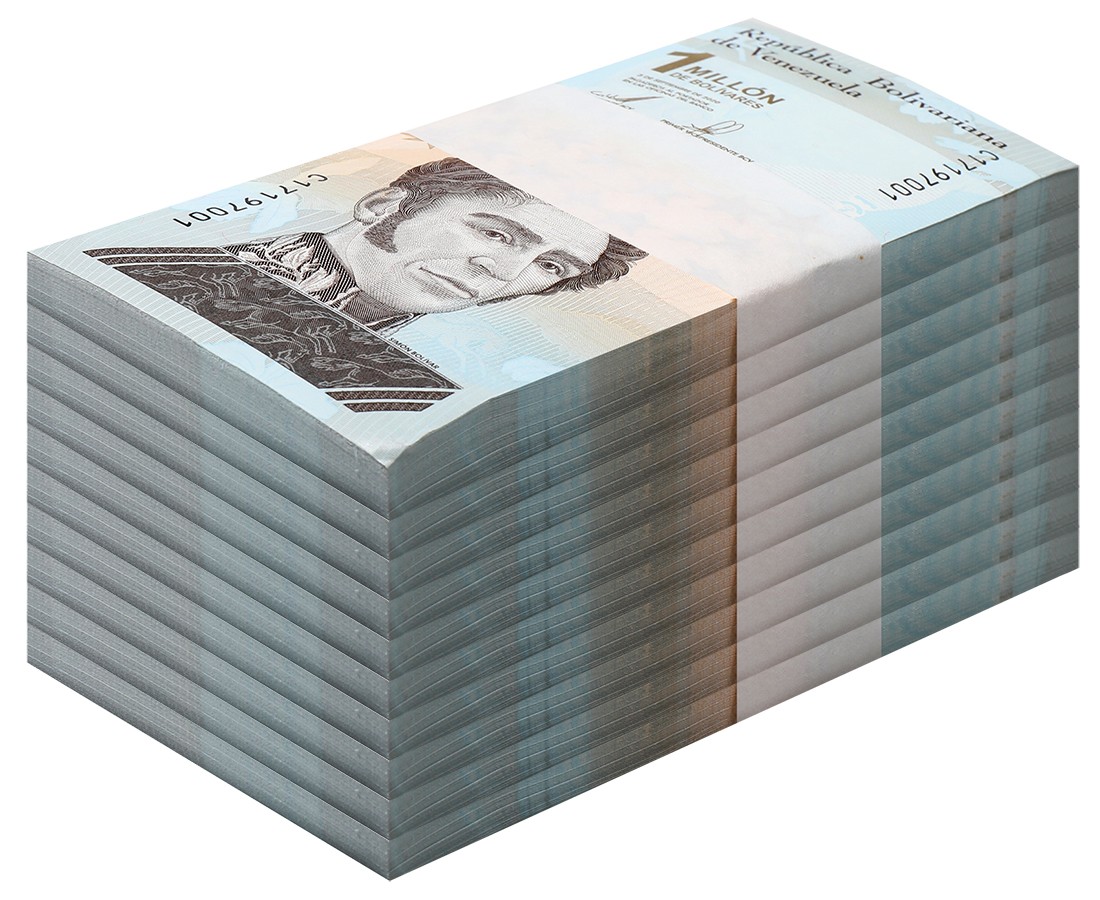RIO DE JANEIRO, BRAZIL – It was born in March, with little vigor, when it was exchanged for 52 cents of the U.S. dollar, but Venezuela’s one million bolivar bill spent weeks without being seen in Venezuela, present in thoughts but invisible like a ghost. Now that it is in wide circulation, the relentless devaluation has led it to be exchanged for less than 25 cents, so it is doomed to disappear.
“Look at nothing, not even a candy; with this, you pay a (bus) fare from here to the corner and back. You don’t go anywhere,” Maribel Ramirez, a Caracas citizen who carries one of these bills in her hand and answers the eternal question of what you can buy with it, explains to Efe news agency.
Read also: Check out our coverage on Venezuela
In a blue tone, without many frills and with the face of Simon Bolivar reconstructed by the Venezuelan government in 2012 in his image and likeness, the bill pales every day against a dollar in which most citizens make their calculations and which is already the almost hegemonic currency in Venezuela.

A SEARCH AMONG BUSES
The constant devaluation of the bolivar, which has devoured the purchasing power of Venezuelans as it grew with inflation, shows its hardest face with the short life it has given to a banknote born with more value for collectors than for citizens.
Ramírez explains that in April when the blue banknote began to be seen, the dollar was around two million bolívares, and for each package of rice, he paid 1.4 million bolívares.
“Now, a package of rice is worth a full dollar, 4 million bolivars,” he points out.
This bolivar, officially born as “sovereign”, is missing eight zeros since it has already undergone two monetary reconversions – those that made it go from the original to the “strong” and the current “sovereign” – and a third one is threatening it, which seems imminent.
Today, with this scarce value, “the millon” is only used to pay for a bus ticket (round trip) in the capital or to pay street vendors.
They are informal merchants like Orlando Viloria, who walk the streets of the popular Caracas neighborhood of Catia. In the Plaza Sucre, in the shadow of the statue of another hero who gave his name to a now-failed currency, he sells a kind of homemade punch, a sugary Christmas drink that he makes himself.
In March, when the bill came out, a glass of this concoction was sold for 300,000 bolivars; today, as he advertises in his cart, it’s price ranges from 700,000 to 1.5 million.
His main problem is that he pays for the ingredients with which he prepares his punch in dollars and, if he calculates in bolivars, “they increase from one day to the next”.
“We used to buy sugar for 2,300 (2.3 million), and now they are asking up to a dollar for a kilo,” he says.
“The (plastic) cups have gone up from one week to the next, and you are amazed,” he adds about another fundamental element in his day-to-day life.
He then faces a dilemma very similar to that faced by most Venezuelans: he receives daily a currency with which he can buy almost nothing and, therefore, must quickly use to exchange for dollars.
If he does not do so and, for example, waits until he reaches a certain amount of bolivars to buy bills in the US currency, he runs the risk that the value of what he has in his pocket will evaporate due to the daily devaluation.
THE FUTURE RECONVERSION
For weeks now, there seems to be nothing else to talk about in Venezuela. Everyone is waiting for a new reconversion that would eliminate zeros from the bolivar and give birth to a new currency, which would put the final nail in the coffin of a banknote as ephemeral as it is striking.
“I am from the year 61, and since I can remember (…) this has never been seen here”, assures Guillermo, a resident of Catia, about the transience of a banknote that “five years ago was a fortune” and “now it is nothing”.
However, this Caracas resident, who does not reveal his last name and spends hours reading the newspaper, explains that he does not want to give up having his own currency, even though now Venezuelans have become “crazy about the dollar”, which “goes up and up and up every day.” “It’s crazy,” he concludes emphatically.
The one million bolivar bills were born in March, although it was distributed in April and became universal shortly thereafter. Now it seems to be awaiting its final death date.

